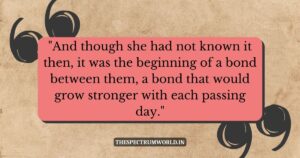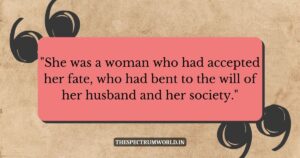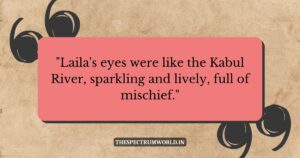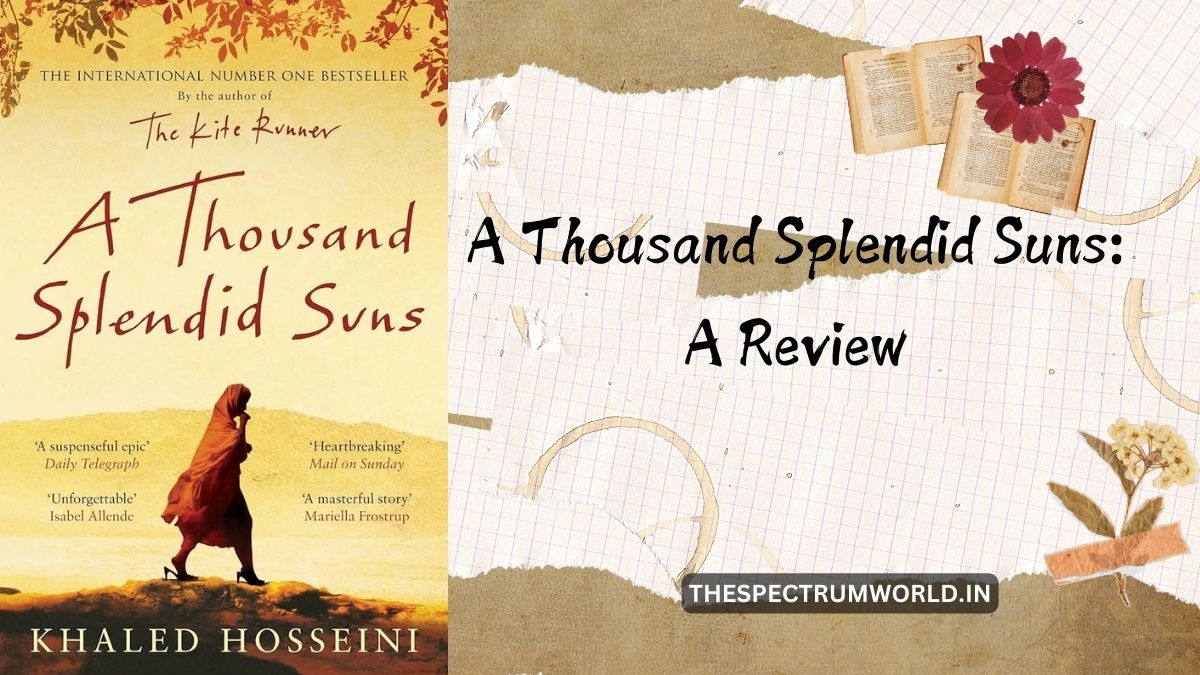A Thousand Splendid Suns: A Review
“A Thousand Splendid Suns” by Khaled Hosseini is a mesmerizing and emotional rollercoaster that delves into the lives of two Afghan women, Mariam and Laila, as they navigate the treacherous landscape of war, oppression, and personal struggle.

Table of Contents
Plot summary of A Thousand Splendid Suns:
The novel tells the story of Mariam, an illegitimate child born to a wealthy man and his servant, and Laila, a beautiful and intelligent young girl from a loving family. Their lives intersect when Laila is forced to marry Mariam’s husband, Rasheed, a brutal and abusive man. As the story unfolds, the two women form a bond, finding solace and strength in each other amidst the chaos and destruction of war-torn Afghanistan.

Review of A Thousand Splendid Suns:
Through the eyes of these two remarkable protagonists, Hosseini masterfully weaves a narrative that spans decades, exploring themes of love, family, sacrifice, and survival. The novel is set against the backdrop of Afghanistan’s tumultuous history, from the Soviet invasion to the Taliban regime.
Mariam, the illegitimate daughter of a wealthy man, and Laila, the beautiful and intelligent daughter of a university professor, form an unlikely bond that becomes the core of the story. As their lives intersect, they face unimaginable challenges, including poverty, abuse, and loss.
Hosseini’s writing is evocative and poignant, conjuring vivid images of the characters’ experiences. His portrayal of the female characters is particularly noteworthy, as he sheds light on the struggles and strengths of women in a patriarchal society.
The novel’s title, “A Thousand Splendid Suns,” is inspired by a poem by Saadi Shirazi, which captures the essence of the story: “One could not count the moons that shimmer on her roofs, / Or the thousand splendid suns that hide behind her walls.”

Interesting Quotes from “A Thousand Splendid Suns”:
“One could not count the moons that shimmer on her roofs, or the thousand splendid suns that hide behind her walls.”
- A beautiful description of Kabul’s beauty and hidden wonders.
“Mariam was a ghost, a waif, a fleeting shadow, a leaf on a windy day.”
- A poignant description of Mariam’s fragile existence.
“She was a woman who had accepted her fate, who had bent to the will of her husband and her society.”
- A powerful commentary on the societal pressures faced by Afghan women.
“Laila’s eyes were like the Kabul River, sparkling and lively, full of mischief.”
- A vivid description of Laila’s beauty and spirit.
“War had come to Kabul, and with it, the Mujahideen.”
- A stark reminder of the devastating impact of war on civilians.
“She remembered Nana’s words: ‘Learn this now and learn it well, my daughter: Like a compass needle that points north, a man’s accusing finger always finds a woman.'”
- A haunting commentary on the societal double standards faced by women.
“In the end, it was not the Taliban that shot her, but her own husband.”
- A heart-wrenching reminder of the domestic violence faced by many women.
“A man’s heart is a wretched, wretched thing, Mariam.”
- A powerful commentary on the complexities of human nature.
“She was not afraid of the Taliban. She was not afraid of Rasheed. She was afraid of being alone.”
- A poignant insight into Laila’s fears and motivations.
“And though she had not known it then, it was the beginning of a bond between them, a bond that would grow stronger with each passing day.”
- A beautiful description of the blossoming friendship between Mariam and Laila.
In conclusion, “A Thousand Splendid Suns” is a powerful and haunting tale that will leave readers emotionally drained but ultimately hopeful. It is a testament to the resilience of the human spirit and the unbreakable bonds of love and friendship.
Published: 2007
Rating: 5/5 stars

Recommendation:
This book is a must-read for anyone interested in literary fiction, historical fiction, or women’s studies. However, please note that the novel deals with mature themes, including violence, abuse, and loss, which may be triggering for some readers.
Read more: The Color Purple: A Classic Review







One thought on “A Thousand Splendid Suns: A Review”